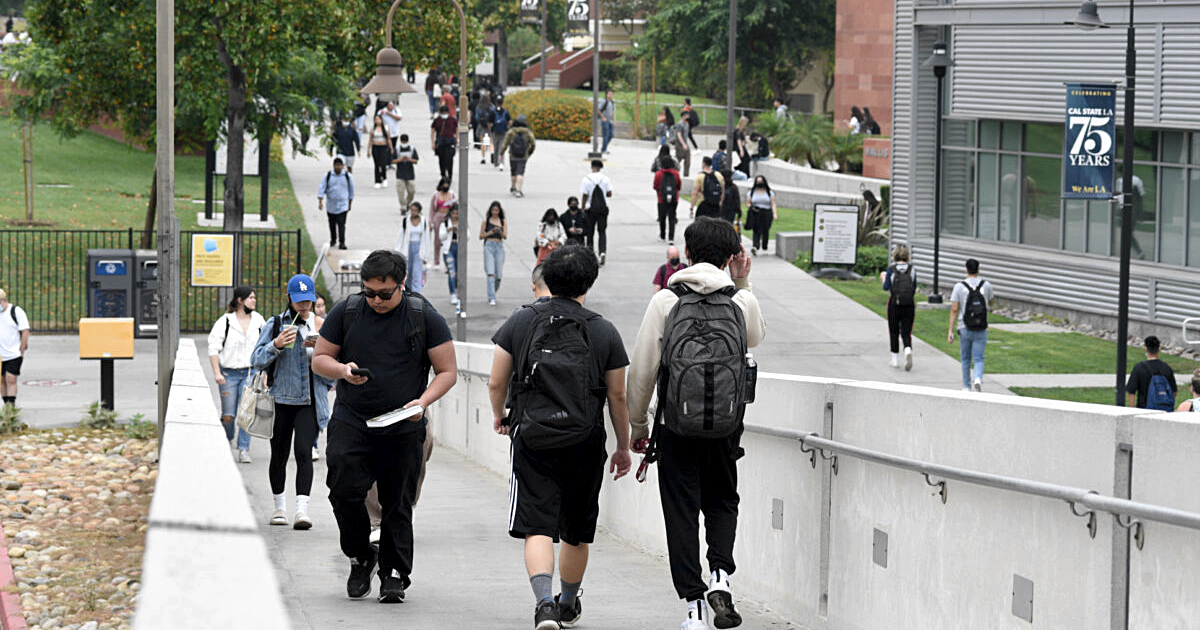
Jul 10, 2023 5:11:17 PM
Editor's Note: This post originally appeared on EdSource.
Now that the Supreme Court has decided to end affirmative action in college applications, campuses across the nation must learn from both the early struggles as well as the recent successes California’s public universities have faced since the state’s Proposition 209 vote.
California’s two major public university systems, California State University and the University of California, have, in my opinion, shown some demonstrable, if not massive, strides in diversifying their student populations to better match the demographic of applicants in recent years despite having a metaphorical hand tied behind their backs.
UC Davis, for example, was recently announced as the “most diverse medical school” while distinguished campuses such as CSU Long Beach boast demographics that reflect their local population.
And the UC’s have shown progress in other ways too. In 2021, the University of California claimed to have admitted its most “diverse student class ever” with Latinos making up 37% of freshmen, a nearly identical number to the state’s demographics. Black incoming freshmen made up 5%, only slightly behind the 2020 census’ 6.5% statewide count.
That diversification was likely driven by UC’s elimination of SAT testing requirements for admission that year, which resulted in an immediate increase in applications and a drop in the overall acceptance rate. This tactic had already been tried outside of California as a means to remove barriers and diversity applicant pools, and reaped more diverse applicants and admissions immediately; I believe this has helped encourage underrepresented students to feel confident in applying to top-ranked universities.
This is not to say the court’s ruling won’t see other states face growing pains. In the immediate aftermath of California’s ban on the practice, public universities struggled to reach students from all backgrounds. In 2002, only 13% of undergraduate students were Hispanic, and 3% were Black.
So how did these universities turn the tide?
In the 27 years since affirmative action consideration for applicants was barred by California voters, the public universities in California sought various solutions for closing the gap with underrepresented groups. Some of these include better recruiting, putting emphasis on student experiences and circumstances, and working with community colleges, which tend to better reflect local demographics.
The largest obstacle is still that popular universities such as UC Berkeley and UCLA regularly struggle to meet the same diversity goals as other campuses within the same system. But even these campuses have seen growth, with a percentage point increase each year since 2018 for Hispanic undergraduates at Berkeley. Meanwhile, UCLA set a goal to meet a 25% threshold for it to become a Hispanic Serving Institute by 2025.
Moreover, 2022’s incoming undergraduates from Black, Hispanic, Native American and Pacific Islander backgrounds saw their numbers rise 20 percent from a decade ago.
Other universities can use California as a template. In fact, the plaintiffs against Harvard held up the UC system as an example of diversity being achieved despite the ban on affirmative action. But they, much like the UC’s themselves, must acknowledge there is work to be done.
While the merits of even having a diverse student population often face scrutiny in today’s political climate, there can be little question that having more of the state receiving a well-rounded education will bode well for our future, as we seek to compete and retain highly skilled residents.
And it should be noted that while Asian Americans have been the focal point of the case against Harvard, Pew Research found that Asian Americans support affirmative action at a slightly higher rate than the general population).
Our state’s universities constantly rank highly among the world’s best, and we should continue to seek student bodies that reflect California, and the world.
The saying “As California goes, so goes the nation” may at first glance be seen negatively by progressives with regard to Affirmative Action, but digging deeper we can see that it has been a challenge the state’s educational system has met and can continue to meet.
Image Credit: Erik Adams/EdSource
Joshua Picazo is majoring in media studies at UC Berkeley and is a member of EdSource’s California Student Journalism Corps.
The story you tell yourself about your own math ability tends to become true. This isn’t some Oprah aphorism about attracting what you want from the universe. Well, I guess it kind of is, but...
If you have a child with disabilities, you’re not alone: According to the latest data, over 7 million American schoolchildren — 14% of all students ages 3-21 — are classified as eligible for special...
The fight for educational equity has never been just about schools. The real North Star for this work is providing opportunities for each child to thrive into adulthood. This means that our advocacy...
Your donations support the voices who challenge decision makers to provide the learning opportunities all children need to thrive.
Ed Post is the flagship website platform of brightbeam, a 501(c3) network of education activists and influencers demanding a better education and a brighter future for every child.
© 2020–2024 brightbeam. All rights reserved.
Leave a Comment